Somehow, this land of fiery peppers, next-level pizza, and superlative beaches is one of Italy’s least-visited regions.

Book your ticket. Calabria is the toe of Italy’s boot, and one of the country’s least-visited regions, which is why you should come. It has mountains, three national parks (Aspromonte, Pollino, and Sila), 500 miles of coastline, turquoise waters, and rolling, green hills lined with olive, orange, and lemon trees. Calabria’s history stretches back to the 8th to 5th centuries BCE, when it was a colony of Greece known as Magna Graecia. Over the centuries, various cultures, including Spanish, Arabic, and Norman, have influenced the region’s culture, language, and architecture.

Find your famiglia. Millions of Italian-Americans trace their ancestry to the Mezzogiorno (southern Italy), including Calabria. I’m one of them. What started out as a genealogy research trip in 2002 led to me moving to my ancestors’ hilltop village, Badolato, on the east coast. I’ve lived there for 15 years now. Do some legwork before you arrive (or pay someone to do it) and you might even find someone in the old village who at least claims to be a parente (relation); I can’t count the number of Calabrian family reunions stories people I’ve heard over the years. If you don’t have Calabrian heritage, don’t worry. Calabrians are warm and welcoming, so don’t be afraid to start up a conversation, and always accept the offer of a glass of homemade wine from the cantina.

Pick a base. There are plenty of sleepy villages to stay in if you want the simple life. Several years back, many locals took advantage of funding to open up bed & breakfasts, and agriturismi (working farms with guest rooms) are also common. For a livelier experience, look to the cities Reggio Calabria, Cosenza, and the regional capital, Catanzaro, which is centrally located and therefore ideal as a base for traveling around. Soverato on the east coast or Tropea on the west coast are solid choices if you want to stay in a smaller but still travel-friendly town. Pizzo Calabro is ideal if you want to be close to Tropea, but not right in the thick of things. My village, Badolato on the Ionian Coast, has a well-developed network of places to stay. Rossano Calabro on the Tyrrhenian coast has several of the region’s most interesting sites, including the Amarelli Licorice Museum and the Purple Codex Rossanensis (Rossano Gospels), a 6th-century Byzantine illustrated manuscript printed in Greek letters on purple parchment.
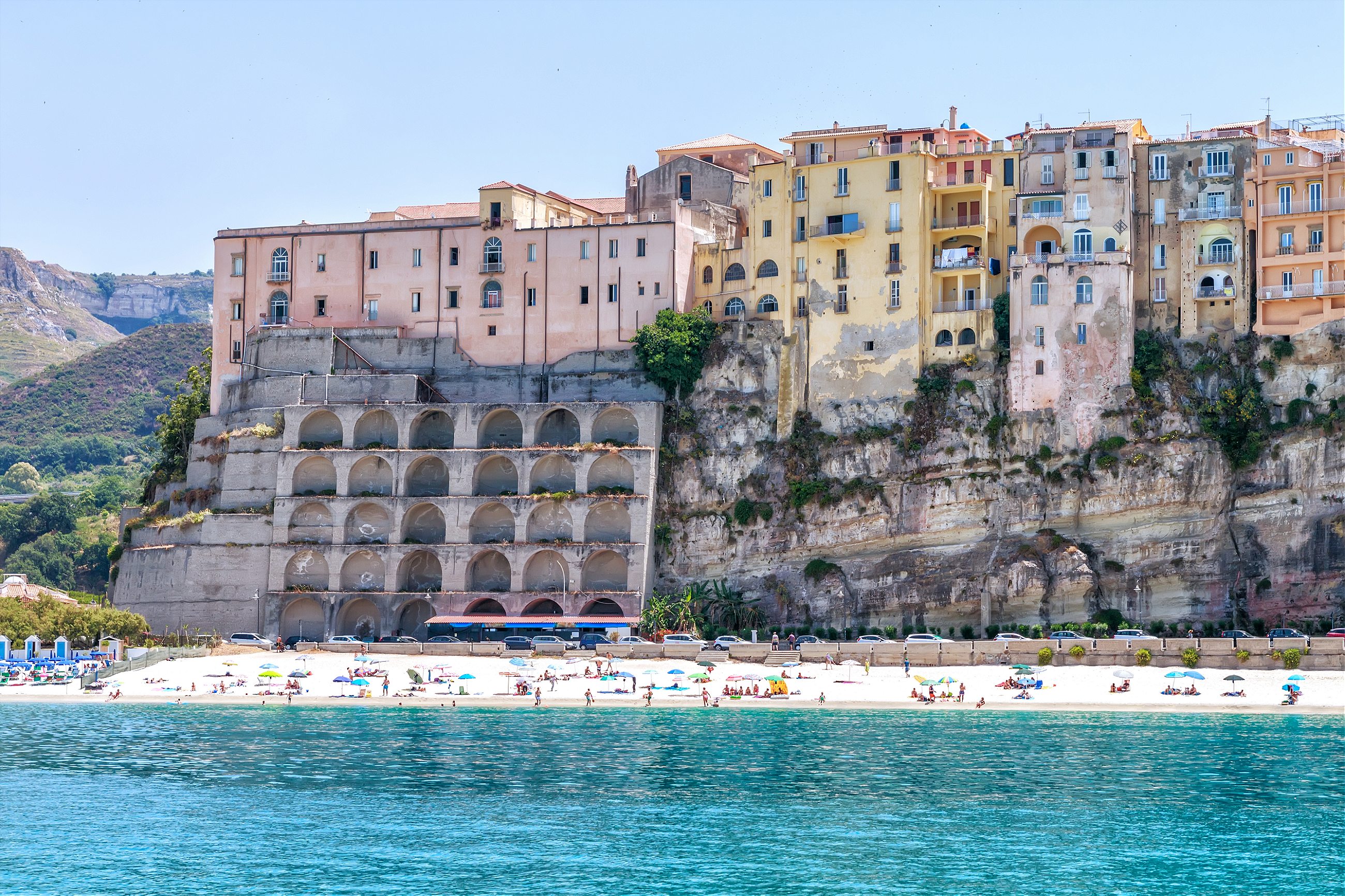

Stay away in August. Italians and other Europeans come in droves in August to use up their generous vacation time, which means elbow-to-elbow crowds at the beach and frustrating traffic. ATMs frequently run out of money. July is slightly less crowded but still hot, and you can’t count on air conditioning in many accommodations. April-June and September-November are optimal. These times have more manageable weather and crowds, but also, many restaurants and attractions are closed outside of these shoulder seasons.

Taste the peperoncino. Calabria’s unofficial symbol is the horn-shaped red chili pepper. Not only does it add a spicy kick to any dish, it also wards off malocchio (the evil eye). If you’re sensitive to spice, pay attention to the ingredients on a menu because peperoncino pops up all over, often with tomatoes. There’s a peperoncino festival in Diamante every September, and one of the best souvenirs from the region is a packet of spices, including dried peperoncino, labeled spaghettata, to be tossed with pasta. Cheap, delicious, and easy to transport.
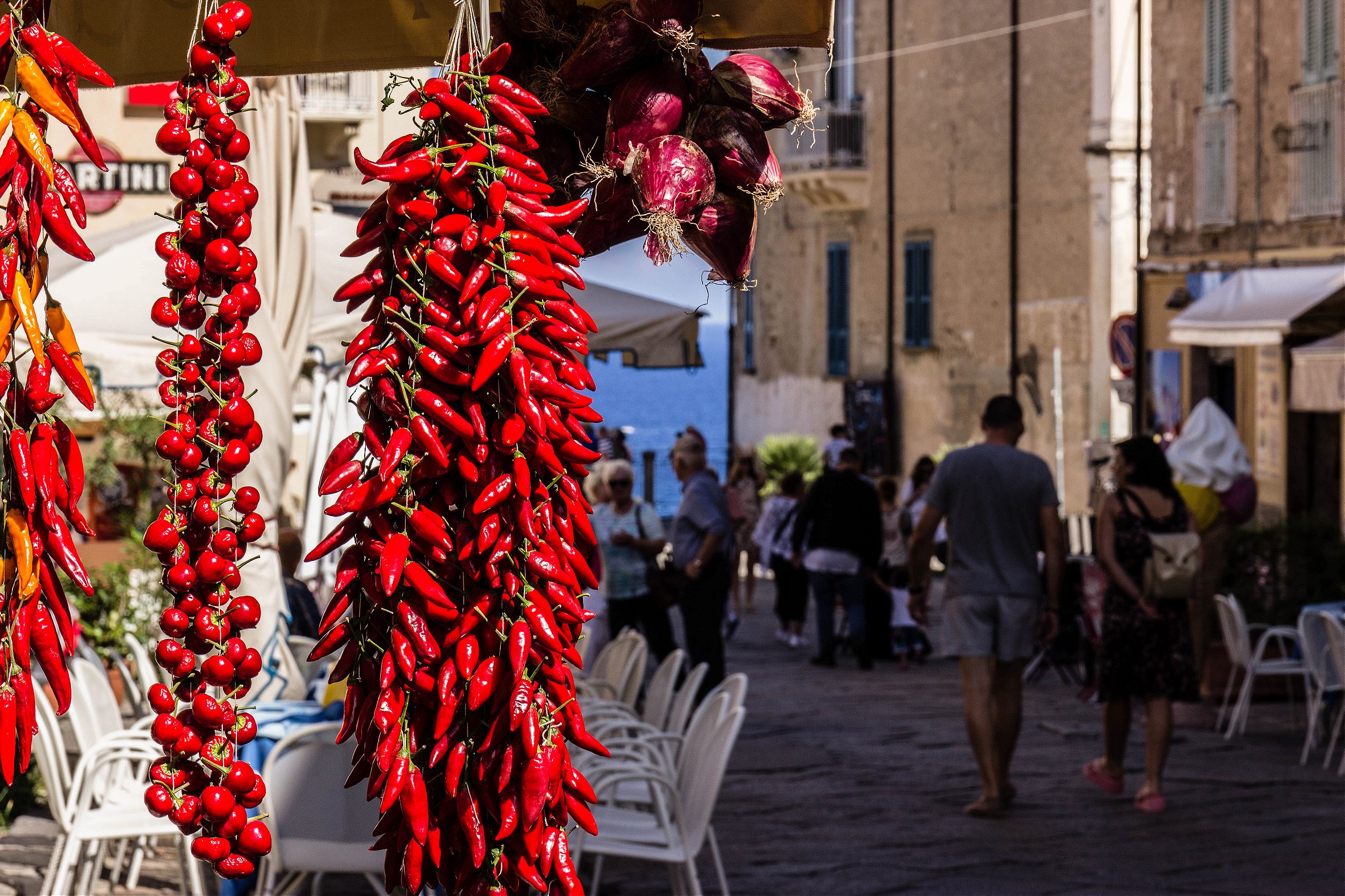

Hit the markets. Most towns have weekly markets, the wares generally determined by the size of the town. Larger ones located by the sea, such as those in Catanzaro (Thursday) and Soverato (Friday) are generally a mix of a lot of random junk you’ll find anywhere in Italy, interesting Calabria souvenirs, and a whole lot of outstanding locally grown and produced food, including fruits, vegetables, meats, honey, cured olives, and baked goods. I don’t recommend bargaining in the food market, but don’t be afraid to walk away if you feel the price is too high on a purse or a pair shoes; the vendor will probably call you back. Get up and out early on market days—they start closing up around noon.

Learn some Italian. Though this is slowly changing, English isn’t widespread. You can usually find someone who speaks at least enough English to get important information, but locals will appreciate any effort you make and enjoy the challenge of using their English as well. With smartphones, there’s no excuse not to have an Italian translation app such as WordReference or iTranslate handy; if you’re old-school, a pocket dictionary and a notebook will work.
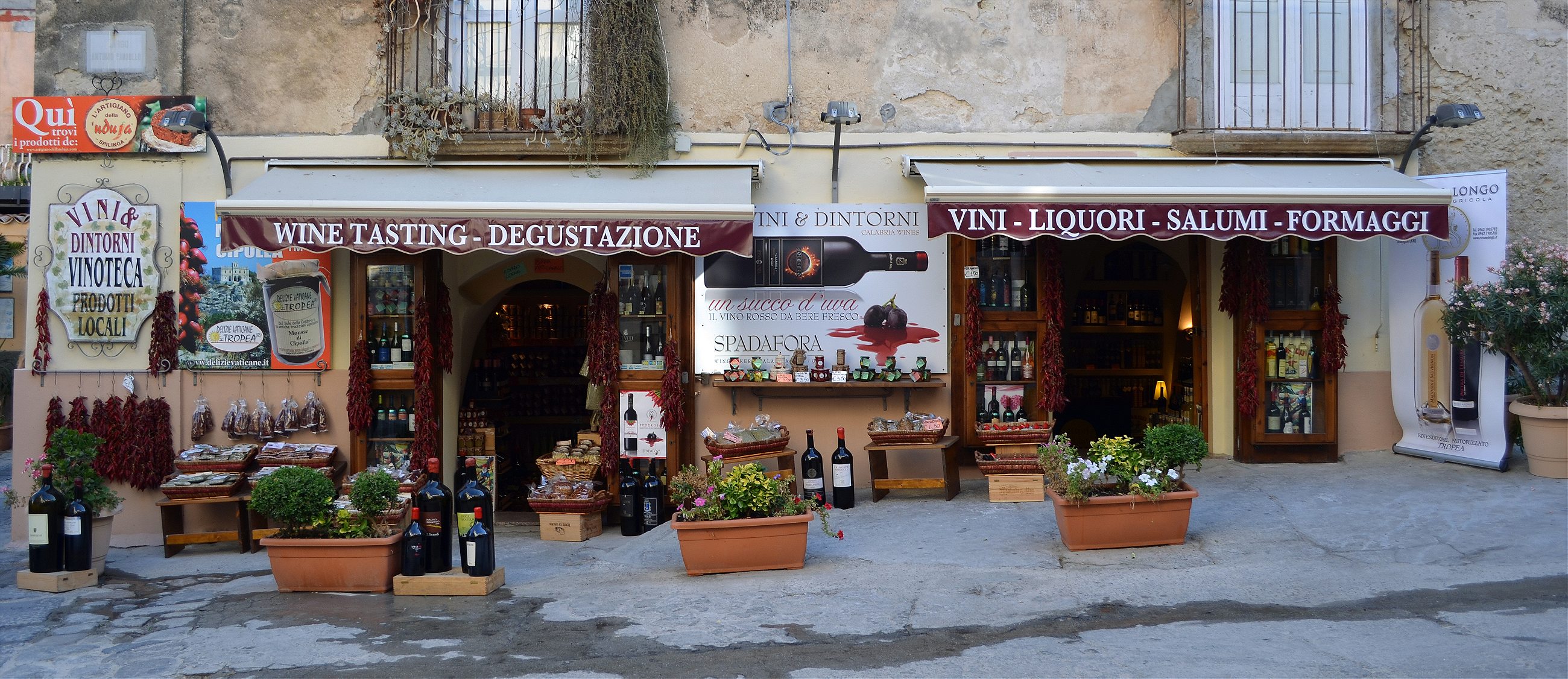

Save pizza for dinner. You’ll find crazy good pizza in Calabria. The catch is that most pizzerias won’t fire up that wood-fired oven for lunchtime. Even in restaurants/pizzerias, the pizza menu may not be available at lunch. Many restaurants don’t open for lunch at all, especially in non-touristy areas, and especially outside of July and August. Your best bet during those times is a rosticceria or tavola calda, which serve fried goodies such as arancini (rice balls), roast chicken, cutlets, and panini. Some of these places do serve pizza al taglio (by the slice), which is square and served in wax paper. It’s tasty enough and it’ll do in a pinch, but for real pizza, do yourself a favor and wait for the wood-fired, evening version.

Rent a car. The best way to get around Calabria is on your own time, with your own means. There is public transportation and it works well enough (mostly) especially in larger towns, but trains only run along the coast, so you’d have to make bus connections—sometimes several—to get inland, and schedules can make that a long, inconvenient journey. If you can’t drive a stick shift, request an automatic ahead of time, because most rental cars have a manual gearshift. If you don’t want to drive, you could get a private driver for at least some excursions. Americans will need an International Driving Permit (IDP), which you should get before your trip through AAA or the American Automobile Touring Alliance (AATA).
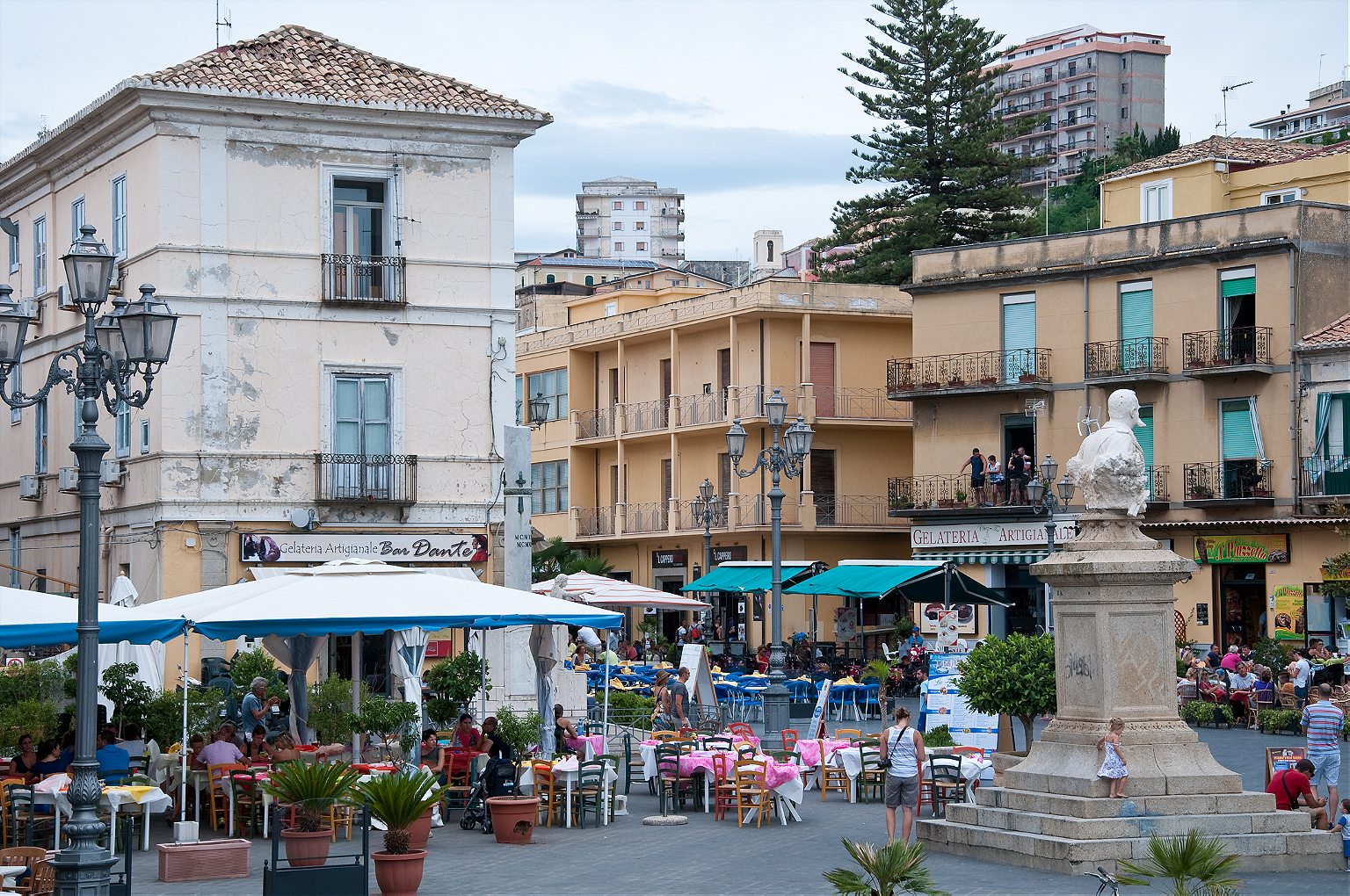

Come for the beaches… Calabria is best known for its sprawling beaches along the Tyrrhenian Sea on the west coast and the Ionian Sea on the east coast, and their dramatic cliffs, coves, and surreal rock formations. On most beaches, you can either rent umbrellas and chairs or bring your own. The stretches of sand with rows of bright umbrellas charge a fee (which ranges from 5 to 20 euros) and often have amenities such as showers. Often, only a flimsy string separates the fee-paying beaches from the free ones, so the only difference is that you’ll have to bring your own stuff for the free beach. I have a soft spot for Tropea’s Cannone Beach, in the shadow of the Benedictine sanctuary, Santa Maria dell’Isola, because it’s a relatively quiet corner in an otherwise busy village.

… but not just for the beaches. The heart of the region is comprised of thick forests, dotted with canyons, streams, and waterfalls. Serra San Bruno, deep in the Serre Regional Park, is well worth the long, winding, pine-scented drive for the grounds of the Certosa, an 11th-century Carthusian monastery founded by Saint Bruno of Cologne. The monastery is closed to visitors, but the museum has reproductions of the monks’ quarters and atmospheric chanting piping through the speakers. La Cascina del Monastero is a great restaurant within the complex (try the fresh ricotta and anything with porcini!) or you can bring a picnic. In the winter, there is skiing in the Sila and Aspromonte Mountains.


Get medieval. Medieval villages are scattered throughout the region, but each is unique and worth its own half-day. Take some time to roam the cobblestone streets not quite wide enough for cars (although that doesn’t stop people driving down them). Gerace, on the Ionian Coast, is the probably the best-preserved medieval village. It has Calabria’s largest cathedral and just about everything you’d want in a medieval town: centuries of architectural delights and a strollable main street, lined with cafes and stores selling local products. Don’t miss the view from the Porta del Sole (Gate of the Sun) at the far end of town, a grand archway overlooking the Ionian Sea. Altomonte, Bova, Chianalea, Morano Calabro, and Stilo are among the most beautiful villages in Italy. If ghost towns are your thing, Calabria has those, too: in Amendolea, Brancaleone, Pentedattilo, Roghudi, and more.

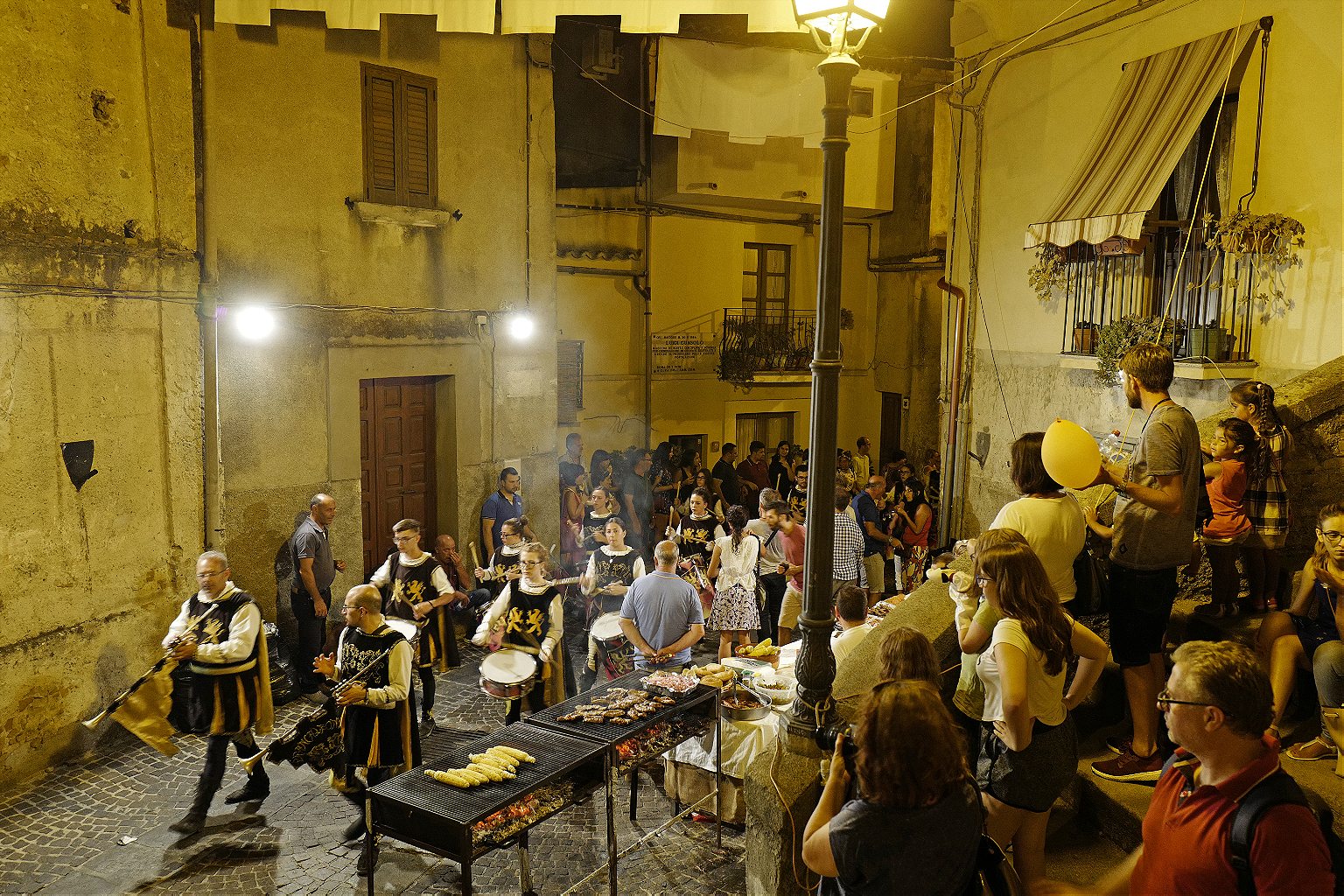

See how the sausage is made. Calabria is a land of salumi, and even if you don’t get to see how it’s made (still by many families in the traditional way), you have to taste it. Soppressata is Calabria’s origin-protected, cured, flattened sausage made from pork and peperoncino, and sometimes other spices such as fennel. The type made from the suino nero (black pig) of Calabria is especially delicious. Then there’s ’nduja (n-DOO-yah): a spicy, spreadable sausage. It’s great on bread or with eggs, pasta, and pizza. Spilinga’s version is the original, and is also origin-protected.
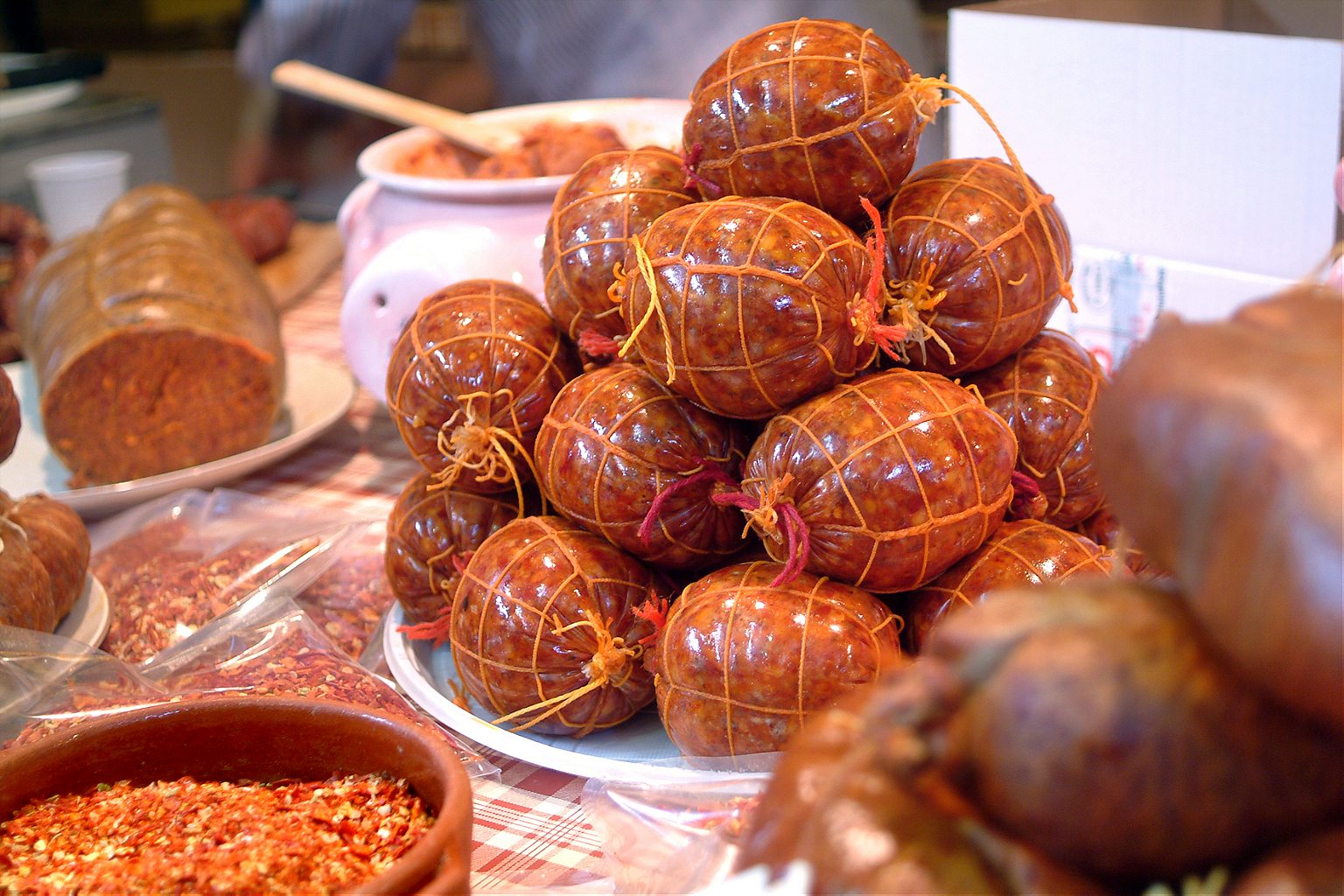

Try foods you wouldn’t normally try. Anchovies (alici), tuna (tonno), swordfish (pesce spada), and sweet red onions (cipolle rosse), taste incredible here. Tropea’s red onions are origin- protected (DOP) and revered throughout Italy. Don’t miss the red onion gelato and marmalade. The area around Reggio Calabria—especially the municipalities of Bagnara and Scilla a little further north up the coast—is noted for its swordfish, Tuna and anchovies are great all over Calabria (even canned), but the closer to the sea the better. Another highlight: cherry peppers stuffed with capers and either tuna or anchovies and packed in olive oil. And here’s my best protip: eat pizza topped with Calabrian tuna and Tropea red onion.


Embrace the digestivo. The after-dinner drink to aid digestion is common throughout Italy, but the Vecchio Amaro del Capo is unique to Calabria. Produced in Capo Vaticano on the Tyrrhenian coast, this amber-colored liqueur is infused with local aniseed, liquorice, peppermint, and other herbs. It’s best served chilled, or downright cold. A sweeter option is limoncello. The Amalfi Coast may be more famous for its lemons, but Calabrian citrus isn’t too shabby, which means you can usually find pretty great limoncello as well. If you’re lucky, your host will offer crema di limoncello—a kind of lemony, alcoholic dreamsicle in a chilled, dainty glass. For another post-dinner treat, order the tartufo di Pizzo, a chocolate powder-coated, melted chocolate-filled ball of hazelnut gelato.

Don’t expect fancy. Most places to eat in in Calabria are on the casual side. There are some fancier spots, such as the Michelin-starred Abbruzzino in Catanzaro and Pietramare in Isola di Capo Rizzuto, but if you’re in a small village and wander into a trattoria, don’t be surprised if there isn’t even a menu and they serve you whatever they’ve made that day. But it might be one of the best meals of your life. Calabria isn’t swarming with tourists, so restaurants generally have to be pretty good to stay in business, because the locals must approve of the food too. Also, don’t feel pressured to order a seven-course dinner. You’re can always order anything you like—there’s no requirement that you order an antipasto, pasta dish, meat dish, etc., onwards through dessert.
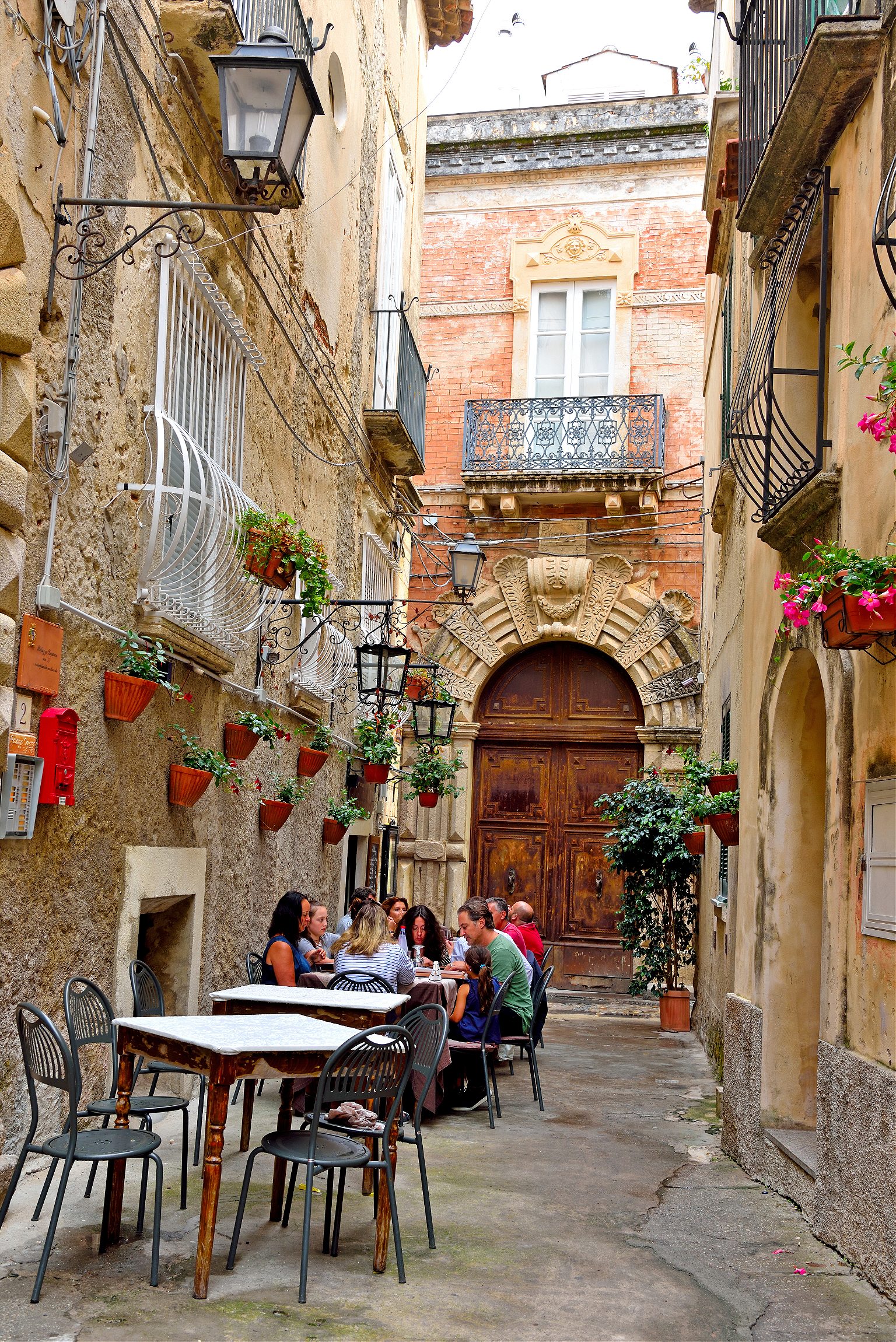

Unplug. Free Wi-Fi is occasionally available in public places and accommodations in Calabria, and 3G and 4G reception can even be spotty depending on your location. If you need reliable access to the internet, this should be your first question for wherever you’re staying so they can recommend a solution. And while we’re talking phones, if you have your heart set on a particular attraction, call ahead to verify their hours. Published opening hours aren’t always accurate.

Slow down. Southern Italy has a reputation for moving just a bit more slowly. Whether it’s road work or service in small shops, just about everything will take longer than you might expect. Once on a bus ride down the two-lane, winding road to the coast, our driver stopped to ask a man who had pulled his car off the road what he was doing. “Delfini!” the man responded and pointed to the sea. Sure enough, three dolphins arched and dove repeatedly into the crystalline waters of the Ionian. Whether we wanted to or not, all the bus passengers bus watched the spectacle for a few minutes before the driver restarted it. Expect delays. And sometimes dolphins.
Carry cash. In Rome or Florence, you may get away with paying by debit or credit card wherever you go, but I wouldn’t recommend risking it in Calabria. If you keep to the cities, this might not be an issue, but many village mom-and-pop places, including bars for your morning cappuccino, still only take cash. And don’t forget the coins. Because one and two euros come in coin form, they can add up quickly, and smaller store owners especially love them because they often don’t keep too much cash on-hand. And they don’t mind waiting for you to count it out.
Dress for the season. The waters may resemble the Caribbean, but Calabria does not have a tropical climate. In the winter, even on the coast, temperatures can drop to freezing, and snow is common in the mountains. Like air conditioning, central heat is not the norm, so factor that into your packing and planning.
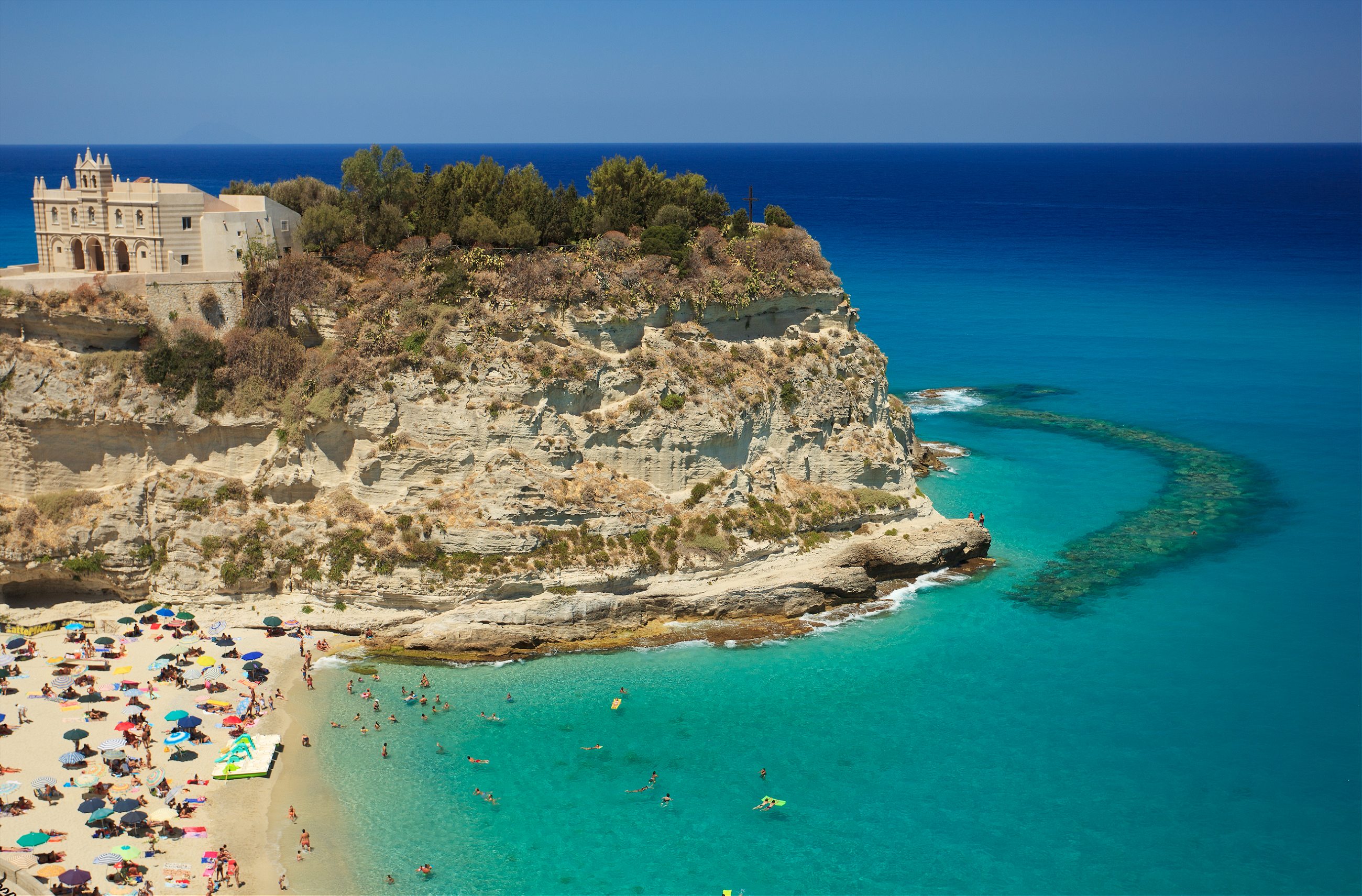
Don’t joke about organized crime. Calabria is the base of ‘Ndrangheta (n-DRAHN-get-ah), an international crime syndicate with roots in the Aspromonte Mountains. A lot of what you read about Calabria will mention ’Ndrangheta, because it pervades many aspects of Calabrian life. It’s certainly no reason not to visit, but be aware that while it’s tempting to make jokes about the mafia, the issue is a lot less amusing to the people who live there.

Rest in the afternoon. You may be more familiar with the term siesta, but here it’s called riposo. In Calabria, just about everything is closed from around 12-5 p.m (usually 1-4 p.m., but it varies according to the whims of the owner). People don’t necessarily spend these hours napping, but it’s still a time to rest, especially in smaller villages. Because of these breaks, you won’t be able to get a whole lot done in the afternoon anyway, so it’s best to get out and about early, rest in the afternoon, and then stay out late. The Italian way.


